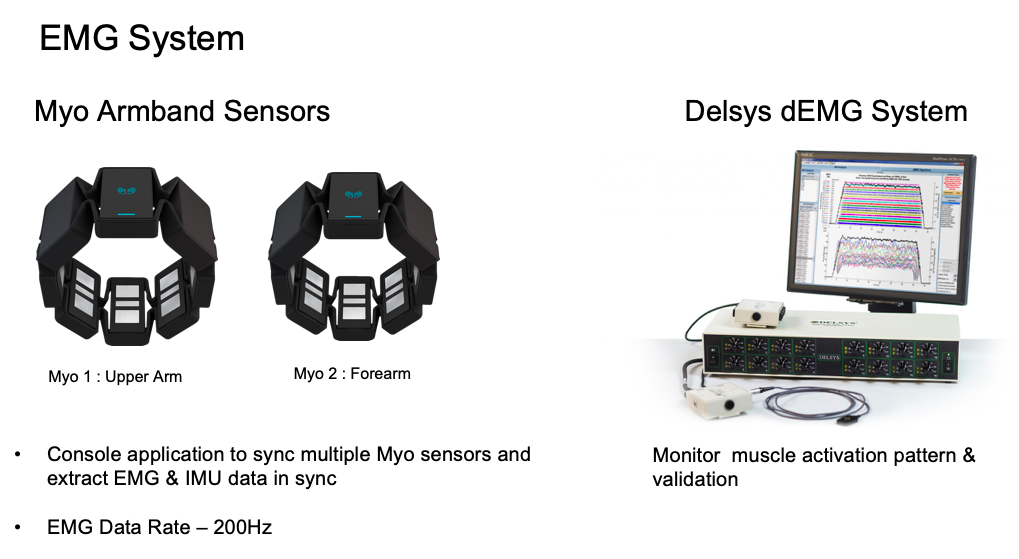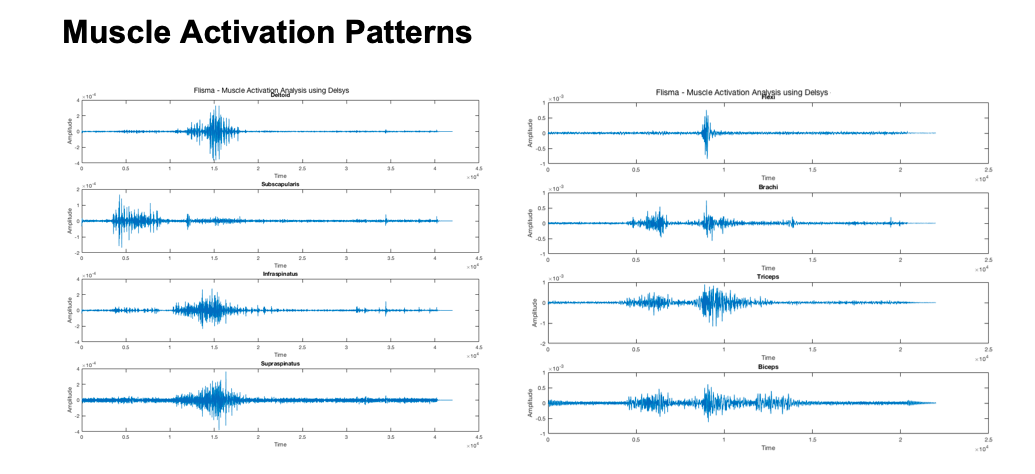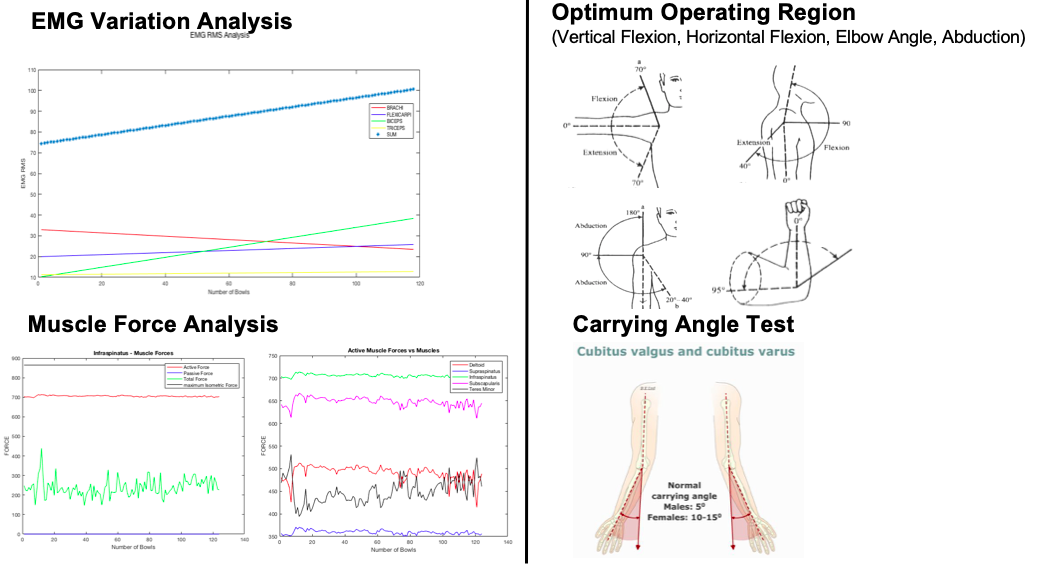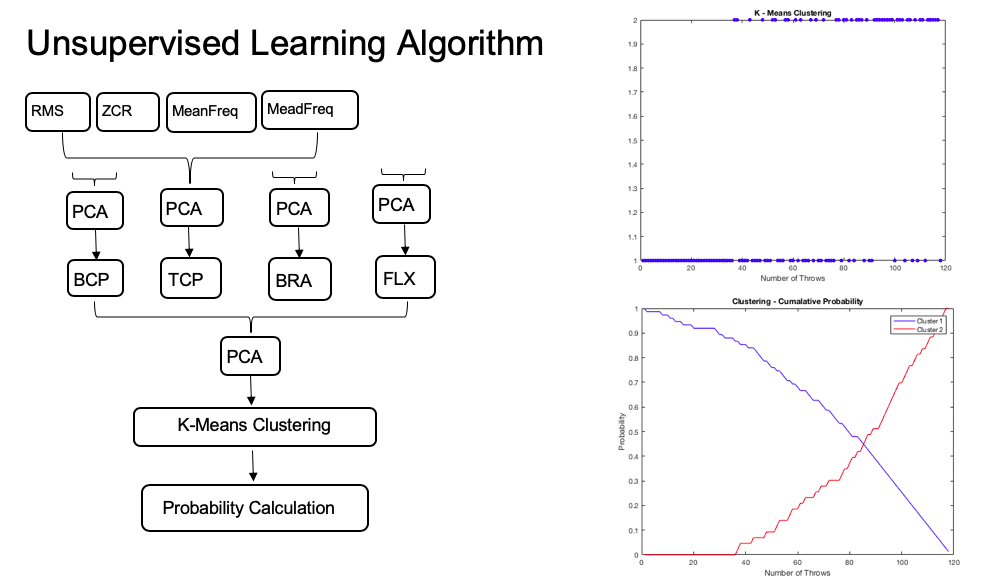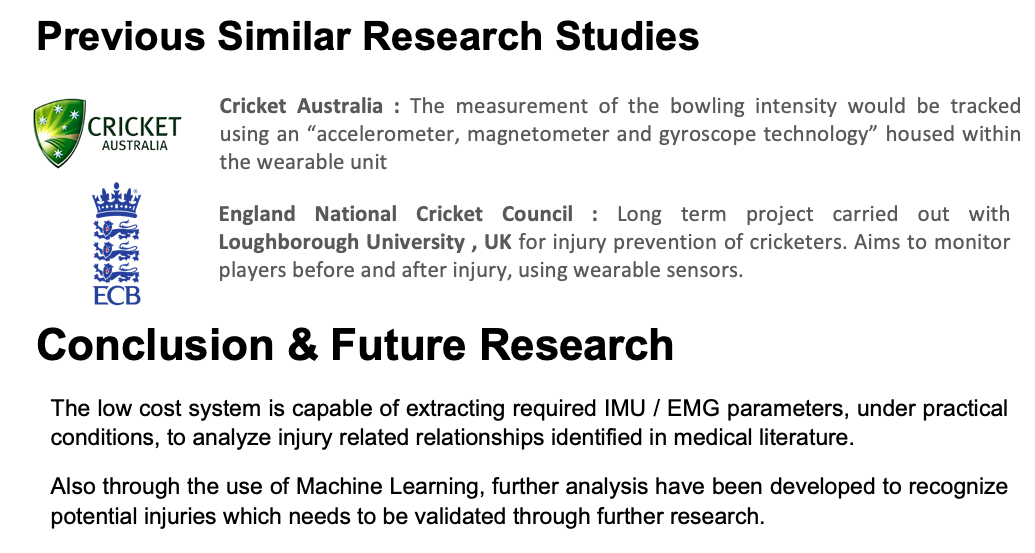Flisma - A Wearable Device to Predict Injuries Due to Throwing
Introduction
The modern sports arena in comparison to early days have become intensely competitive in nature, which has enhanced the focused on integrating technology towards sports enhancement. The amalgamation of technology with sports could be mainly identified in the areas of sports performance enhancement & sports injury prevention. This project focuses on using existing technologies and concepts to develop a wearable system which could be used for early injury prediction of athletes. The project focus is limited to injuries which occur due to different aspects of throwing which is visible in a range of sports. It has also been identified that overuse & poor techniques are the key drivers of injury. The designed system focuses on extracting the Electromyography (EMG) signals of identified muscle groups and joint angles of the human arm through Inertial Measurement Units (IMU) sensors in order to carry out analysis for injury prediction. The research focuses on obtaining the medical expertise from sports Doctors for medical interpretations in order to develop relationships & patterns to detect injury. Relationships on optimum muscle forces, muscle activation patterns & muscle co-activation patterns have been identified to provide an insight on the phenomena of overuse. Poor techniques of the athletes are monitored through the developed system by performing standard medical tests such as the carrying angle test and optimum operating region tests identified. It is important to note that the researchers focused on the complex dynamic motion of throwing with resting intervals in between which prompted towards the development of an unsupervised learning algorithm which focused on features related to throwing yet to be explored. The team focuses on fine tuning the developed algorithm through further data acquisition in future. The identified crucial indicators of possible injury are presented through the developed web / mobile application which provides an easily interpretable graphical user interface. The research is of great value towards the athletes at it would enhance the players to perform in their optimum capacity avoiding injuries and the loss of potential sports events due to potential injuries.
Problem Statement
Todays sporting arena has become intensely competitive, which has encouraged the use of Technology and the development of systems focussing on athletes Performance Enhancement & Early Injury Detection.
Mainly due to Overuse of Muscles & Poor Techniques of Athletes, the probability of Injury increases. This has prompted towards the development of early injury detection systems to monitor and manage the athletes in suitable manner.

Scope
The research initially concentrated on the throwing action which can be seen in Cricket Fielding & Fast Bowling.
Wireless IMU & EMG Sensors are really expensive which is key constraint regarding the practical implementation of injury detection system. Hence this research study focussed on the development of a “low cost wearable” to eliminate such constraints.
Focus Group Cricket Fielders & Fast Bowlers.
Anatomical Focus Human Forearm, Upper Arm & Glenohumeral Joint / Rotator Cuff Muscles.
Data Obtained IMU & EMG

Methodology
- Previous Research on identifying injuries mostly based on Isometric motion (Static), compared to the “dynamic nature of this application”.
- No publicly available IMU / EMG data sets related to throwing.
- Literature Study & Medical Study / Expertise to identify relationships.
- Development of the wearable with the feedback of cricketers, to ensure practical feasibility in application.
- A total of 6 voluntary test subjects participated in the study. Three were required to throw a cricket ball repetitively towards a constant 25 meter distance while the rest carried out fast bowling. (Test Subjects – Age (19-24years) , Height (170 – 177cm))
- Identify Relationships & Analysis.




